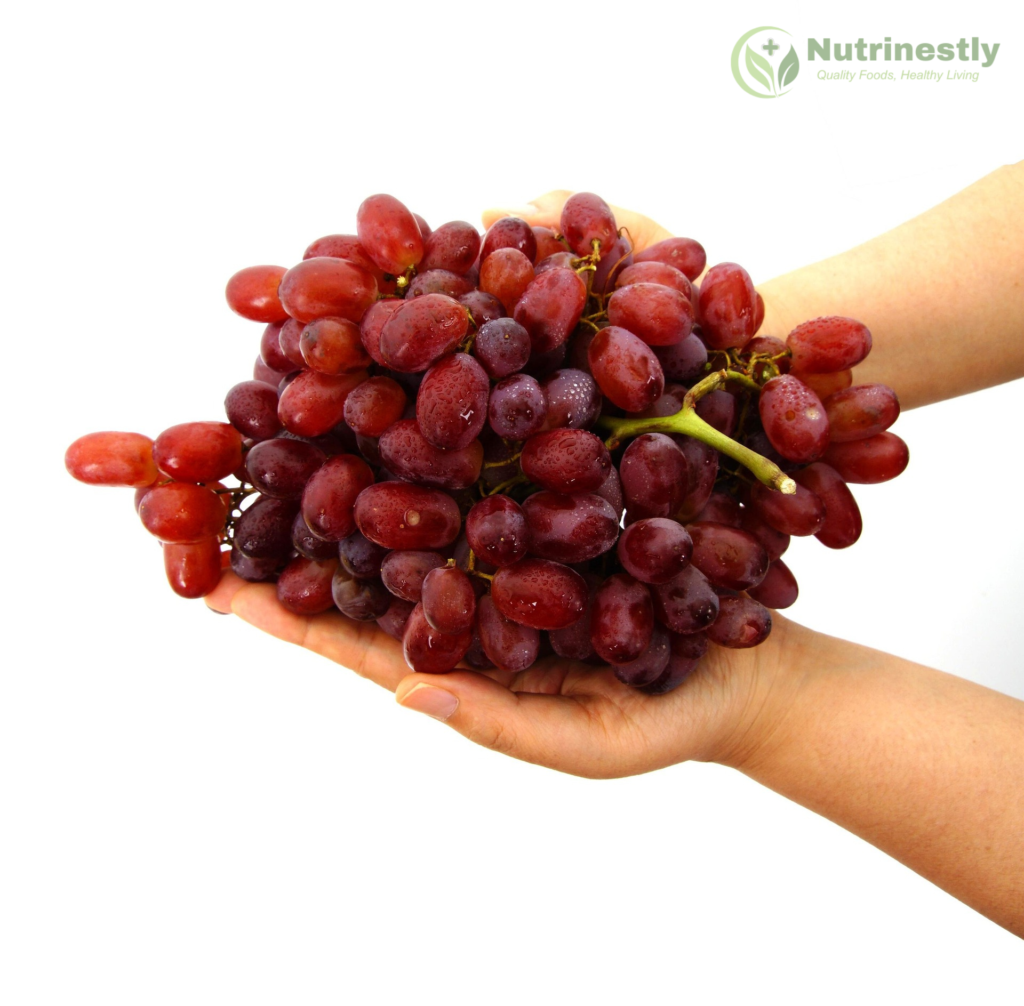
A Brief Overview of Seeded Grapes: An Ageless Delight
The grape, long humble, has had a lofty place in human history, adorning our plates with its crunchy delight, fermenting to the festival beverage of wine, and even providing a pharmacy of medicinal qualities. In our modern times, seedless grapes have completely dominated the consumer market, appreciated for the convenience of eating them. But to ignore their seeded relatives is a disservice to a powerful connection to our farming heritage, a more varied and complex flavor and texture, and a more varied nutritional profile.
Seeded grapes, by definition, reflect a more direct link to the wild origins of this popular fruit. Unlike selectively bred seedless relatives, these grapes still possess the inherent qualities refined over centuries. Within their sweet pulp are tiny seeds, usually a nuisance, but the same seeds are flavor bombs and nurseries of nutrition. Seeded grapes have a richness and depth of flavor that seedless grapes do not, and a denser concentration of healthy compounds. They are a reflection of the vine’s intrinsic bountifulness, presenting a healthier and more real experience.
The history of grape cultivation goes thousands of years back, and the fruit was heavily involved with the ancient civilizations such as the Egyptians, Greeks, and Romans. Grapes were not just a source of food; they were a part of their existence, used for religious rituals, culinary practices, and medicine for diseases. Even though with the ease of consumption so much demand for seedless fruits over the years has been created, increasingly people now are realizing and appreciating the unique virtues and qualities of seeded grapes that lie inherent within them and thus are becoming increasingly keen towards these traditional fruit.
Why Seeded Grapes Are Typically Neglected in Contemporary Times
Although possessing a convincing set of advantages, seeded grapes have been relegated to the back seat by the popular appeal of their seedless relatives.
The contemporary consumer, who is busy in most cases and demands quick satisfaction, by necessity prefers fruits that need minimal preparation and promise smooth consumption. The seeds, though few in number, are considered an encumbrance by the majority and hence the option of seedless grapes is exercised by them. This has also been perpetuated by production practices which favor seedless varieties as they are saleable and easy to work with in a business setting. In the process, though, there has been an unwitting loss of the natural benefits that seeded grapes possess.
With increasingly educated and health, environment, and origin conscious members of the population, a revolution is being brought about. There is a growing tendency towards relearning and getting back to nutrient rich traditional food, and in this regard, seeded grapes are now starting to earn their due position. People are no longer merely seeking convenience but are opting for the better flavor, additional nutrition, and heritage experience that seeded grapes provides.
Nutritional Benefits of Seeded Grapes: A Treasure Trove of Wellness
Seeded grapes are more than a delicious snack; they are nutritional giants, packed with compounds that play a major role in our overall health and well being. With their high content of vitamins, minerals, antioxidants, and fiber, they are a nutritious addition to an overall healthy diet.
Packed with Essential Vitamins and Minerals: Powering Vital Body Functions
Seeded grapes are a natural reservoir of essential vitamins and minerals, which play significant roles to perform in keeping body functions in optimal condition.
Seeded grapes have high content of vitamin C, a potent antioxidant that increases immunity and is important in collagen production, resulting in healthy skin, bones, and blood vessels. Vitamin K, which is another essential nutrient present in seeded grapes, is necessary for normal blood clotting and helps keep bones healthy. Potassium is involved in maintaining fluid balance, nerve function, and muscle contraction and is good for the health of blood pressure and the heart. Additionally, seeded grapes also contain iron, which is employed in oxygen transportation within the body, in averting fatigue, and in maintaining energy levels. These vitamins and minerals synergistically work together to support overall well-being, so seeded grapes are a worthwhile investment in the diet. Grape Seeds: Small but Full of Healthy Components
Grape Seeds: Small but Full of Healthy Components

The secret nutritional brilliance of seeded grapes is in their small seeds.
These otherwise wasted pieces are full of high concentrations of potent antioxidants, particularly oligomeric proanthocyanins (OPCs). These powerful molecules are free radical scavengers, unstable molecules that can harm cells and contribute to oxidative stress, a factor in aging and chronic disease onset. By stopping free radicals dead in their tracks, grape seed antioxidants help anti-aging, maintaining youthful skin and cellular health. Proanthocyanins have also been proven to maintain cardiovascular systems in optimal health by hardening vessels and improving circulation. In addition, resveratrol, another great compound present in grape seed and skin, has drawn great interest with its potential linkage to longevity and its potential to reduce chronic disease risk. Due to the very high antioxidant content of these compounds in grape seeds, they are a fine source of health benefits.
Potential Cardiovascular Benefits: A Healthy Heart in Bloom
Regularly consumed seeded grapes may have great cardiovascular benefits.
The potent antioxidants present in grape seeds, i.e., proanthocyanidins and resveratrol, help enhance circulatory efficiency by keeping the blood vessels healthy and elastic. They also help lower the level of HDL (“bad”) cholesterol, the key risk factor for cardiovascular disease, and possibly raise levels of HDL (“good”) cholesterol. Furthermore, the potassium level in seeded grapes ensures blood pressure regulation and keeps cardiovascular a healthful system. Grape seed polyphenols block the oxidation damage in blood vessel lining, an initial step toward preventing atherosclerosis, or narrowing and hardening of the arteries. Seeded grapes can become a tasty, natural treatment for a healthy heart in a regimen.
Anti-Inflammatory Activity: Calming the Body’s Response
Most disease of health correlates with chronic inflammation, from joint inflammation and arthritis to metabolic disease and neurodegenerative disease.
Grape seed polyphenols have highly potent anti-inflammatory activity, which may provide relief in a variety of inflammatory diseases. It has been found that grape seed extract may be of therapeutic value in arthritis by alleviating pain and inflammation in the joints. In addition, the anti-inflammatory activity of grape seed phytochemicals would be useful in maintaining brain health by prevention of neuroinflammation, which is an etiological agent for neurodegenerative diseases. Eat seeded grapes every day to assist in reducing the risk factors for metabolic disorder, which are typically controlled by chronic inflammation. Natural anti-inflammatory activity of grape seeds renders seeded grapes a health food for general well-being and possible prevention of the consequences of chronic inflammatory disease.
Fiber-Rich for Healthy Digestion: Promoting a Balanced Gut Microbiome
Seeded grapes’ skin and seeds both have high dietary fiber content, an essential nutrient for proper digestion.
Seeded grapes’ fiber bulked up the stool, aiding digestion and preventing constipation. It promoted regularity in bowel movements and overall gut health. In addition, the fiber in seeded grapes is a prebiotic, which means that it feeds the good bacteria that live in our gut. An evenly balanced gut microbiome is now being understood to play a prominent role in virtually every area of health, including immune response and nutrient absorption, and even mood. By enhancing the well-being and function of such healthy microbes, the fiber in seeded grapes provides an evenly balanced and healthy gut flora, ultimately encouraging overall digestive wellness.
The Value of Grape Seeds to Traditional Society: A Background of Healing and Gastronomy
Grape seeds hold value that goes much further than in the fields of contemporary nutritional studies, having for centuries been utilized in traditional cookery and pharmaceutical culture by world societies
Historical Societies: Tapping the Potential in Grape Seeds as Beauty and Therapy
Grape seeds have been recognized by ancient cultures such as the Egyptians and Greeks as being of medicinal value centuries ago. They are shown to have used them in ancient medicines for certain diseases and even in cosmetics. The Egyptians used the extracts of grapes due to their antioxidant effects, while the Greeks added grape seeds to traditional medicine because they were believed to have healing powers. This is proof of their early appreciation of the distinctive properties of grape seeds.
Mediterranean Diet: A Central Element of a Legendary Health Culture
Seeded grapes have been a traditional element of the Mediterranean diet for years, a diet which is legendary for its correlation with length of years and fewer risks of chronic diseases.
Drinking whole grapes including seeds is just one aspect of the high dietary fiber and antioxidant nature of this healthy diet. The Mediterranean emphasis on eating the whole foods for their natural taste and dietetic qualities has been admirably well served by seeded grapes, an integral part of this ancient pattern of dieting.
Traditional Recipes: Utilizing Grape Seeds for Flavor and Aesthetic
Grape seeds, in most cultures, are not wasted but rather deliberately added to traditional recipes.
Grape seeds in other culinary cultures are ground and utilized for adding a richer flavor to sauces and chutneys. Grape seed oil, as obtained from the grape seeds, is used for consuming due to its unique taste and health related attributes. Crushed grape seeds have also been used in some traditional herbal drugs for their seemingly medicinal applications. These ancient applications showcase the ingenuity and intelligence of past generations for utilizing every bit of the grape for food and medicine.
Grape Seeds in Ayurveda and Traditional Chinese Medicine: Ancient Healing Systems
Both Ayurveda, traditional Indian medicine, and Traditional Chinese Medicine (TCM) acknowledge the medicinal potential of grape seeds.
Grape seeds in Ayurveda are prized for their astringent and cooling characteristics, said to balance the body, alleviate inflammation, and induce detoxification. TCM finds grape seeds useful due to their capacity to enhance blood flow, nourish the liver, and foster overall well-being. These ancient forms of medicine, which have benefited from centuries of empirical insight, also attest to the health promoting features of grape seeds and their contribution to well-being.
Seeded Grapes’ Culinary Applications: Accepting Flavor and Texture
While the seed presence might discourage some, seeded grapes provide a special dining experience with plenty to utilize, enabling the enjoyment of their diverse taste and incorporation of their nutritional value.

Fresh Consumption: A Healthy and Convenient Enjoyment
One of the easiest ways to appreciate seeded grapes might be through fresh consumption.Even if others spit them out, eating the seeds allows for access to their healthy antioxidants. The bitter flavor of the seeds can be complemented by the sweetness of the grape pulp, adding yet another dimension to the flavor. Pairing seeded grapes with cheese and nuts creates a satisfying, well rounded snack, with the pleasant contrast of sweet, savory, and crunchy textures. Add a drizzle of honey or a spoonful of yogurt and seeded grapes are a tasty and healthy snack.
Integration into Meals: Contribution of Depth and Dimension
Seeded grapes can be used to add an explosion of sweetness and much needed textural component to many dishes.
They make a great addition to a fruit salad, adding juicy contrast to other fruits. Adding them to grain bowls and green salads provides a sweetness touch and an antioxidant kick. Seeded grapes are also employed in making tasty jams, chutneys, and sauces, where their inbuilt sugars and soft tannins contribute to richness and depth in the flavor. Seeded grapes are roasted along with meats to make a sweet savory blend, where heat caramelizes the grapes and gives them more flavor.
Using Grape Seeds in Smoothies & Snacks: A Nutritional Supplement
As a choice for those who do not want to chew on the seeds, blending seeded grapes into smoothies is an excellent way of incorporating their nutritional benefit into your nutrition.
The seeds are mashed up quite nicely using a blender, adding extra fiber and antioxidants into your drink. Grape seed extract, available in over the counter supplement strength, can also be added to healthful homemade snack foods such as energy bars or granola. As a convenient and healthy way to add body to breakfast foods or snacks, ground grape seeds may be used as a topping for oatmeal or yogurt, adding a hint of nuttiness along with an antioxidant and fiber content advantage.
Seeded Grapes in Winemaking: The Key to Complex Flavors
Winemakers have long appreciated the vital contribution seeded grapes make to creating quality wines with character, structure, and aging ability. Seeds contribute greatly to the wine’s complexity through their effect on tannin levels, which add structure, texture, and aging ability.
Fermentation Process: Seeds as Flavor Enhancers
During fermentation, seeds release tannins and other phenolic compounds into the wine in progress, adding to its color, aroma, and general flavor. Winemaking management of seeds during fermentation plays an important role in determining the final character and quality of the wine.
Wine Differences: The Impact of Seeds on Taste and Structure
Seeded grapes yield wines with richer tannins, more refined structure, and fuller flavor than those from seedless grape varieties. These tannins help the wine age well and mellow to rich complex flavors as it ages. Seeds also play most significantly in the unique taste profiles of most higher quality wine styles.
Regions to Note: Paying Tribute to Traditional Seeded Varieties
Most of the world’s greatest wine regions, including Bordeaux in France, Tuscany in Italy, and Napa Valley in California, are engaged in growing traditional varieties of grapes with seeds. The winemakers in all of these places are aware of the significant role the seeds play in the quality and flavor of their wines and continue to use the seed containing varieties because of the enhanced winemaking qualities of these varieties.
Environmental Footprint and Sustainability: The Ecological Advantages of Seeded Grapes
Seeded grape production can provide a strong environmental and sustainability benefit, with greater biodiversity and reduced chemical interference necessary.
Advantages of Biodiversity: Genetic Heritage Preservation
Seeding grape cultivars and keeping them in maintenance ensures that there is retention of the genetic heritage of grapes.Seeded grapes are usually reproduced by cuttings, thus creating genetically identical plants. Seeded grapes, on the other hand, provide room for natural reproduction and the development of new gene forms, leading to a more hardy and healthy agricultural system. Sustaining such biodiversity is the key to long-term sustainability and adaptability to grapes against environmental changes and looming diseases.
Less Chemical Intervention: Natural Resilience
Seeded grape varieties tend to be more robust and resistant to certain pests and diseases than some selectively bred seedless varieties with certain characteristics. Such natural resistance can minimize the use of chemical pesticides and herbicides, making agriculture more sustainable and the environment healthier. Consumers can encourage farming practices that value ecological balance by opting for seeded grapes.
Challenges: Shifting Consumer Perceptions
Though environmentally friendly, the market now favors seedless grapes, making it challenging to increase cultivation of seeded varieties on a large scale. But as awareness among consumers about the nutritional and environmental benefits of seeded grapes increases, there is scope to reverse the market trend and promote increased cultivation of these natural and sustainable varieties.
Consumer Trends and Market Demand: A Growing Appreciation for Tradition
There is an evident pattern of rising consumer interest in seeded grapes, stimulated by greater awareness of the positive health effects of seeded grapes and the need for less processed and more natural products.

Organic & Heirloom Varieties: Reviving Old-Time Grapes
More farmers are reintroducing heritage seeded grapes onto the market through more organic farms and artists of heirloom varieties. Producers of such products emphasize taste, nutritional integrity, and soil conducive agriculture for such manufacturers and customers in response to rising numbers of people looking for such distinctive and organic products.
Consumer Preferences: Healthy and Authentic Firstly
As people learn more about the benefits of grape seeds, i.e., their antioxidant nature, the demand for seeded grapes is increasing steadily. Most people now realize that the slight inconvenience of seeds is a meager price to pay for the richer taste, improved nutrition, and linkage with traditional farming that seeded grapes provide.
Case Studies: Success Stories in Seeded Grape Markets
Secluded, specialty vineyards and organically oriented marketplaces actively advocating and selling seeded grapes are faring well, proving there to be a sustainable market for heirloom grape types. Such firms prefer specializing in informing customers on the exceptional advantages and properties of seeded grapes and earning themselves an avid clientele group that recognizes and values their peculiarity.
Table of Contents
Conclusion: Honoring the Lasting Worth of Seeded Grapes
Seeded grapes are far more than a less handy rendition of seedless cousins. They are a nutritional powerhouse, a culinary gem, and a key to the abundant past of grape growing and winemaking. As seedless grapes stock the aisles of contemporary grocery stores, the distinctive flavor, remarkable health benefits from their powerful seeds, and their place in cultural heritage make seeded grapes a fruit to be rediscovered and enjoyed.
The next time you go for a bunch of grapes, try grabbing a seeded bunch instead. Embrace their homey goodness, relish their unparalleled flavor, and sample the abundance of nutritional advantages that await you within. Have you found innovative and tasty ways to enjoy seeded grapes? We invite you to share your stories and staple recipes, adding to the increased popularity of this overlooked and underappreciated fruit!
.

